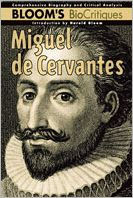Miguel de Cervantes
Writing at a time when the concept of a novel was still relatively new, Cervantes created a masterpiece, Don Quixote (part 1, 1605; part 2, 1615), whose main character remains one of the most well-developed comic figures in literature, forever remembered for his chasing of windmills and his teaming with the more down-to-earth and, for the most part loyal, sidekick whom he casts as his squire. The work parodies the chivalric romance, satirizes other forms and ideas, and comments on madness, humor, idealism, and illusion. Aside from Don Quixote, Cervantes wrote other works, exploring a range of forms such as pastoral romance, poetry, short story, and drama-but to this day, Don Quixote remains his most celebrated work. A view of its significance was stated by the critic Lionel Trilling, who declared that "all modern fiction is a variation on the theme of Don Quixote."
1103278210
Miguel de Cervantes
Writing at a time when the concept of a novel was still relatively new, Cervantes created a masterpiece, Don Quixote (part 1, 1605; part 2, 1615), whose main character remains one of the most well-developed comic figures in literature, forever remembered for his chasing of windmills and his teaming with the more down-to-earth and, for the most part loyal, sidekick whom he casts as his squire. The work parodies the chivalric romance, satirizes other forms and ideas, and comments on madness, humor, idealism, and illusion. Aside from Don Quixote, Cervantes wrote other works, exploring a range of forms such as pastoral romance, poetry, short story, and drama-but to this day, Don Quixote remains his most celebrated work. A view of its significance was stated by the critic Lionel Trilling, who declared that "all modern fiction is a variation on the theme of Don Quixote."
35.0
Out Of Stock
5
1

Miguel de Cervantes
112
Miguel de Cervantes
112
35.0
Out Of Stock

Product Details
| ISBN-13: | 9780791081167 |
|---|---|
| Publisher: | Facts on File, Incorporated |
| Publication date: | 03/28/2005 |
| Series: | Bloom's BioCritiques Series |
| Pages: | 112 |
| Product dimensions: | 6.10(w) x 9.10(h) x 0.70(d) |
| Age Range: | 7 - 12 Years |
About the Author

From the B&N Reads Blog
